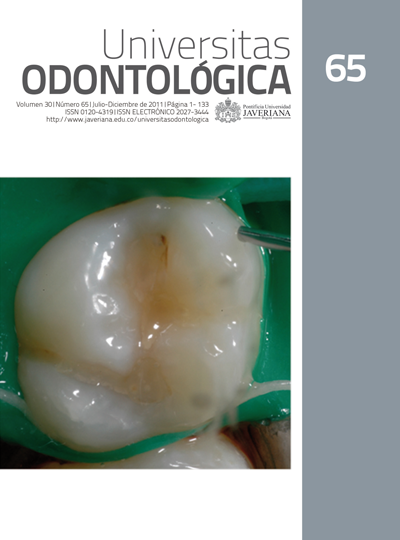Abstract
La cicatrización es el proceso por el cual ocurre el reemplazo de tejido afectado por uno nuevo. El hueso es uno de los tejidos del cuerpo que tiene la capacidad de cicatrizar favorablemente luego de una lesión. Debido a la complejidad de las afecciones que aparecen en los maxilares y a su alta frecuencia, es muy importante conocer cómo ocurre la cicatrización de los defectos óseos tras la quistectomía, identificando los diferentes procesos y técnicas para acelerar la neoformación ósea, la utilización de materiales de injerto según su origen, características de reabsorción, qué tan importantes y efectivos resultan y en qué difieren en cuanto a cicatrización ósea espontánea. Se presenta el caso clínico de un paciente de sexo masculino con diagnóstico de quiste radicular en la zona anterior mandibular. Se le realizó una quistectomía y controles radiográficos posteriores a la cirugía durante nueve meses, en los cuales se observó buen proceso de cicatrización y regeneración ósea espontánea.
This journal is registered under a Creative Commons Attribution 4.0 International Public License. Thus, this work may be reproduced, distributed, and publicly shared in digital format, as long as the names of the authors and Pontificia Universidad Javeriana are acknowledged. Others are allowed to quote, adapt, transform, auto-archive, republish, and create based on this material, for any purpose (even commercial ones), provided the authorship is duly acknowledged, a link to the original work is provided, and it is specified if changes have been made. Pontificia Universidad Javeriana does not hold the rights of published works and the authors are solely responsible for the contents of their works; they keep the moral, intellectual, privacy, and publicity rights.
Approving the intervention of the work (review, copy-editing, translation, layout) and the following outreach, are granted through an use license and not through an assignment of rights. This means the journal and Pontificia Universidad Javeriana cannot be held responsible for any ethical malpractice by the authors. As a consequence of the protection granted by the use license, the journal is not required to publish recantations or modify information already published, unless the errata stems from the editorial management process. Publishing contents in this journal does not generate royalties for contributors.


